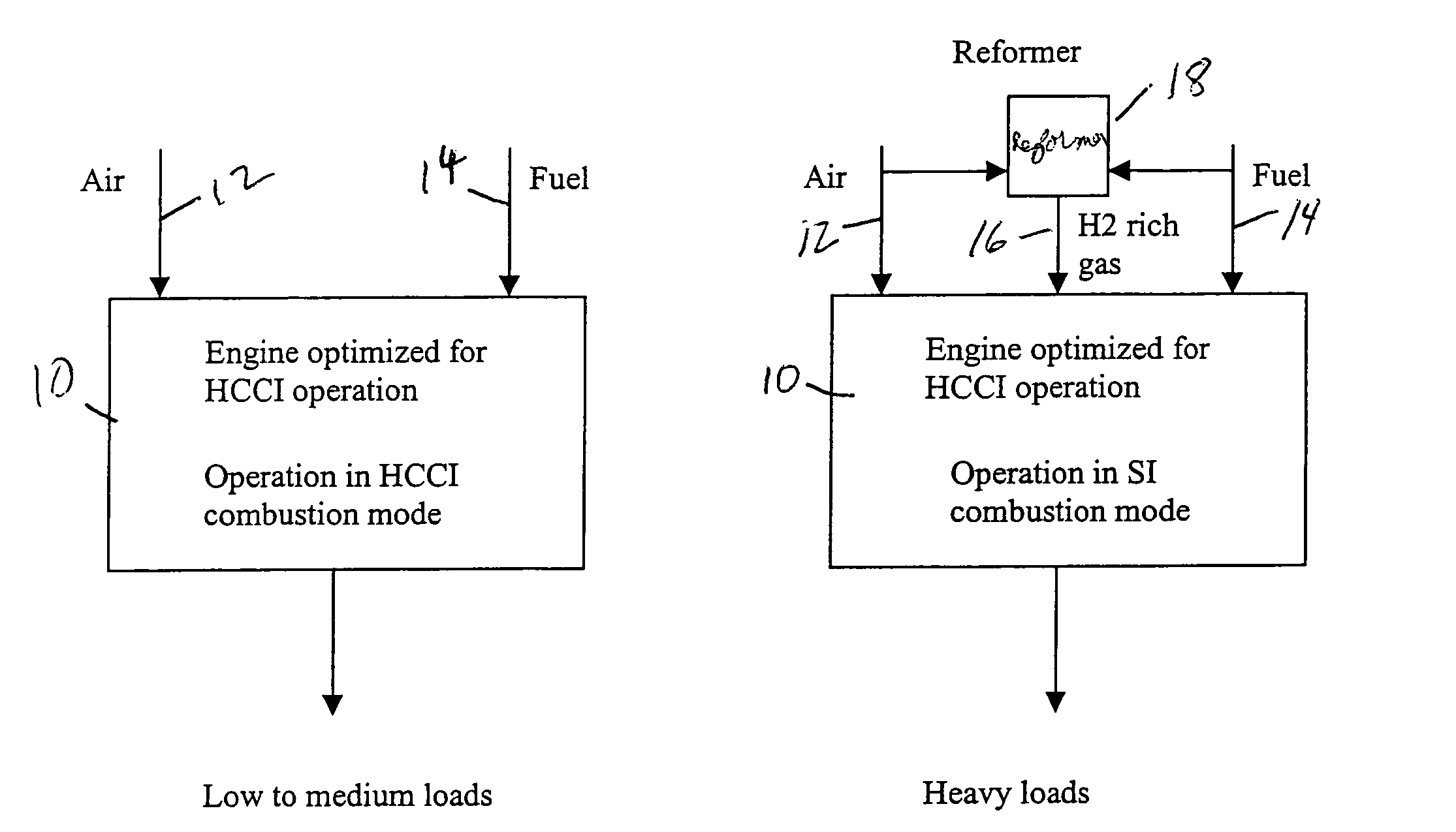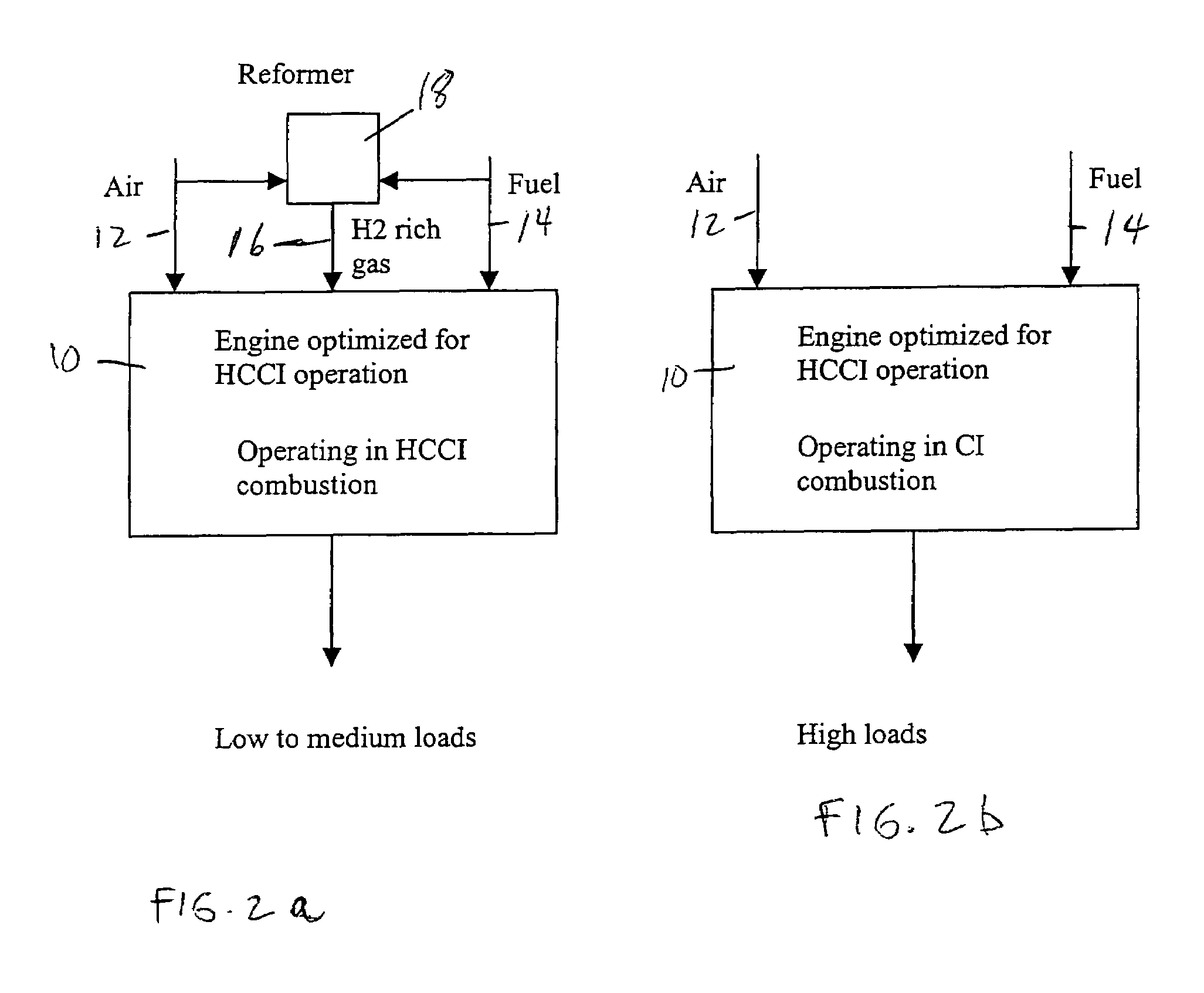High compression ratio, high power density homogeneous charge compression ignition engines using hydrogen and carbon monoxide to enhance auto-ignition resistance
- Summary
- Abstract
- Description
- Claims
- Application Information
AI Technical Summary
Benefits of technology
Problems solved by technology
Method used
Image
Examples
Embodiment Construction
[0012]As discussed above, it is extremely difficult in a practical engine to make gasoline HCCI combustion work satisfactorily at all loads and, in particular, at high engine loads. With reference to FIG. 1a a high compression engine 10 operating in HCCI combustion mode at low to medium loads operates on air 12 and fuel 14. As shown in FIG. 1b the engine 10 is operated at heavy loads in a spark-ignition combustion mode and a severe knock problem is avoided by adding a hydrogen-rich gas 16 in addition to air 12 and the fuel 14. The hydrogen-rich gas 16 may come from a reformer 18 such as a plasmatron reformer.
[0013]The engine 10 is therefore a dual mode engine and a control system (not shown) is provided to switch from the mode of FIG. 1a to the mode of FIG. 1b that includes the introduction of the hydrogen-rich gas. The addition of hydrogen or a hydrogen / carbon monoxide mixture enhances the octane rating and hence the knock resistance of the fuel under high load, high compression ra...
PUM
 Login to View More
Login to View More Abstract
Description
Claims
Application Information
 Login to View More
Login to View More - R&D
- Intellectual Property
- Life Sciences
- Materials
- Tech Scout
- Unparalleled Data Quality
- Higher Quality Content
- 60% Fewer Hallucinations
Browse by: Latest US Patents, China's latest patents, Technical Efficacy Thesaurus, Application Domain, Technology Topic, Popular Technical Reports.
© 2025 PatSnap. All rights reserved.Legal|Privacy policy|Modern Slavery Act Transparency Statement|Sitemap|About US| Contact US: help@patsnap.com



